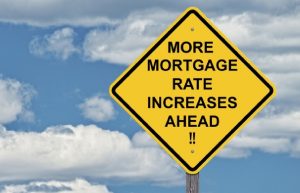
Higher mortgage rates, more people affected
Westpac economist says many borrowers are expected to spend more money on debt management costs as they move to higher mortgage rates. According to the bank’s economic update, more and more borrowers are rolling over to higher mortgage rates, and about 50% of all mortgages are expected to be repriced at higher rates this year. For example, a borrower who fixed a mortgage for two years in May 2021 could have secured an interest rate of about 2.6%, but now that it is two years old and re-contracting a mortgage, senior economist Satish Ranchhod says he has to pay more than 6% interest. He said that if you bought a house in most parts of the country with an 80% mortgage two years ago, the monthly mortgage payment could increase by about $900 due to the interest rate increase, and in Auckland, where house prices tend to be higher, the mortgage interest cost could be up to $1,600 more per month. According to recent data from Stats NZ, households are spending an average of 7.5% of their disposable income on interest payments per quarter from a low of 5% at the end of 2021. Satish Ranchhod emphasized that while interest costs are still relatively low compared to before the pandemic when they accounted for about 10% of household spending, only about one-third of households have mortgages, so these costs are not evenly distributed. He said that according to data from RBNZ’s last financial stability report, households with mortgages are already spending about 15% of their income on interest payments. In an interview with Checkpoint, Satish Ranchhod said that discretionary spending has actually held up quite well so far. However, he thinks that pressure will actually be applied within the next 12 months and it could be a difficult time for many families who are already in a cost-of-living crisis and have additional mortgage pressure. He said many households had to spend much more and got less return for their money. He said that especially for low-income households, they spend more money on essentials such as food and utilities, and for general households, they think they will reduce spending next year while dealing with cost pressures. Considering the average amount of goods brought home every week, he predicted that it would probably decline by about 2% within a few years. Since household spending accounts for about 60% of the economy, this is quite a contraction and is expected to be a significant obstacle to economic activity over the next few years.

더 높은 모기지 금리, 더 많은 사람들에게 영향
Westpac 경제학자는 많은 대출자들이 더 높은 모기지 금리로 넘어가면서 가계가 부채 관리 비용에 더 많은 돈을 쓸 것으로 예상한다고 말했다.
은행의 경제 업데이트에 따르면, 점점 더 많은 차용인이 더 높은 모기지 금리로 롤링되고 있으며 올해 모든 모기지의 약 50%가 더 높은 금리로 가격이 재조정될 것으로 예상된다.
예를 들어, 2021년 5월에 2년 동안 모기지를 고정한 차용인은 약 2.6%의 이율을 확보했을 수 있지만, 이제 2년이 되어 다시 모기지를 계약하면 6%가 넘는 이자를 내야 한다고 시니어 경제학자 Satish Ranchhod가 말했다.
그는 2년 전에 80% 모기지로 전국 대부분의 지역에서 주택을 구입했다면 이자율 상승으로 인해 월 모기지 지불금이 약 900달러 추가될 수 있다며, 집값이 더 높은 경향이 있는 오클랜드에서는 모기지 이자 비용이 한 달에 1600달러까지 더 내야 할 수 있다고 덧붙였다.
Stats NZ의 최근 데이터에 따르면 가계가 2021년 말 최저 5%에서 매 분기 평균 가처분 소득의 7.5%를 이자 지불에 지출하고 있는 것으로 나타났다.
Satish Ranchhod 이자 비용이 가계 지출의 약 10%를 차지했던 팬데믹 이전에 비해 여전히 상대적으로 낮다지만, 가계의 약 1/3만이 모기지를 가지고 있기 때문에 이러한 비용이 균등하게 분담되지 않는다는 점을 명심해야 한다고 강조했다.
그는 RBNZ의 마지막 금융 안정성 보고서의 데이터에 따르면 모기지가 있는 가구는 이미 소득의 약 15%를 이자 지불에 지출하고 있다고 전했다.
Satish Ranchhod는 Checkpoint와의 인터뷰에서 자유재량 지출이 실제로 지금까지 꽤 잘 버텼다고 말했다. 그러나 앞으로 12개월 안에 압력이 실제로 가해질 것이라고 생각하며, 이미 생활비 위기에 처해 있고 모기지 압력이 추가되면 많은 가족에게 힘든 시기가 될 수 있다고 덧붙였다.
그는 많은 가정이 훨씬 더 많은 비용을 지출해야 했고 비용 대비 적은 수익을 얻었다고 말했다.
그는 특히 저소득 가정의 경우 식품과 공과금과 같은 필수품에 더 많은 돈을 지출한다며, 일반 가정의 경우 비용 압박에 대처하면서 내년에 지출을 줄일 것이라고 생각한다고 말했다. 매주 집에 가져가는 평균 상품의 양을 생각하면 아마도 몇 년 안에 약 2% 정도 하락할 것으로 그는 내다봤다.
가계 지출이 경제의 약 60%를 차지하기 때문에 이는 꽤 큰 위축이며, 이것이 향후 몇 년 동안 경제 활동에 중요한 걸림돌이 될 것이라고 생각된다고 그는 말했다.
